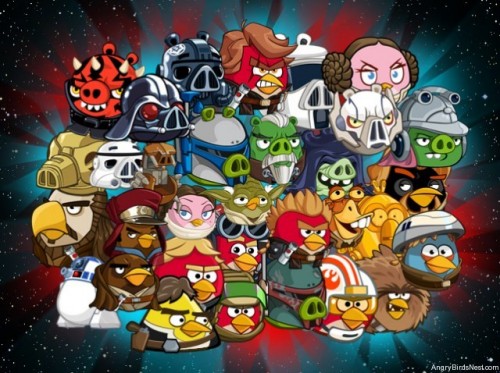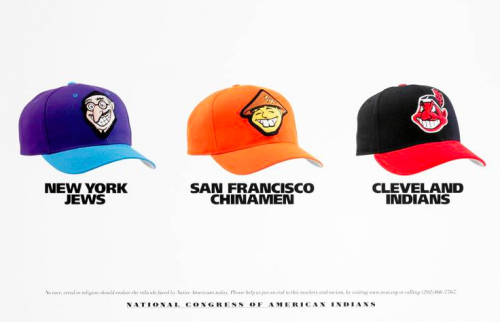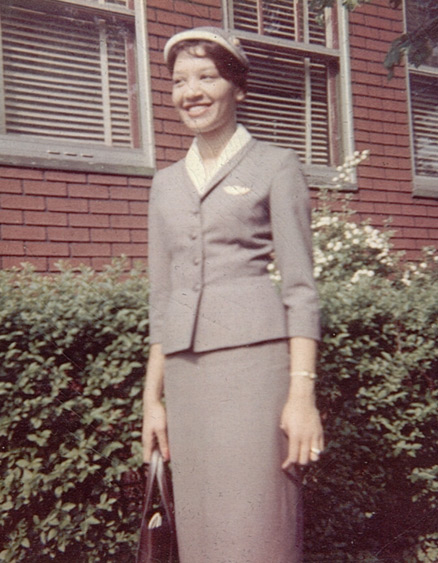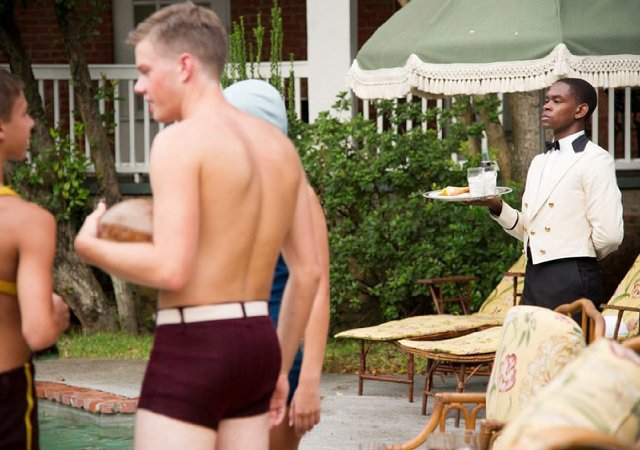I have enjoyed Star Wars Angry Birds since I first discovered it almost a year ago, at the suggestion of my brother (a fellow Star Wars fan). While I never warmed to the original Angry Birds, I was tickled that I could clearly identify the Star Wars characters the birds represented in the themed version of the game. When Star Wars Angry Birds II released last month, I anxiously dove into the sequel. On a whim, I decided to use the new store feature to look through the many characters that I might someday unlock.
When I finally scrolled through all of the characters in the game, I noticed something peculiar.
Han Solo (played by Harrison Ford, a white male, in the Star Wars films) is portrayed by a yellow bird. Luke Skywalker (played by Mark Hamill, a white male) is portrayed by a red bird. Qui-Gon Jinn (played by Liam Neeson, a white male) is portrayed by a tan bird. These birds all have costumes or props that identify them as the characters they are meant to represent, but their color is not related to the skin color of the characters/actors in the films.
This pattern held true for every (human) male character with two notable exceptions: Captain Panaka (played by Hugh Quarshie, a black male) and Mace Windu (played by Samuel Jackson, a black male) are both portrayed by brown birds.
So, what’s the message? Well, for white, male Star Wars characters, skin color is unimportant; white characters can be represented by a bird of any color. It is the costuming or props used by these birds that convey the essence of the character. But for black Star Wars characters, their skin color (brown) becomes the defining element conveying the essence of the character.
Likewise, gender is also a defining characteristic for the portrayal of female characters. Princess Leia (played by Carrie Fisher, a white female) and Padme (played by Natalie Portman, a white female) are both portrayed by pink birds. There are no other pink birds in the game. Again, the color of the bird is unimportant, unless the bird is female, in which case the character’s gender (denoted by its pinkness) becomes the essential element of that character.
This same pattern also appears in the original Star Wars Angry Birds, in which Princess Leia is the only pink bird and Lando Calrissian (played by Billy Dee Williams, a black male) is the only brown bird.
White privilege and male privilege persist, in part, by framing the white, male experience as normal. Even in a game like Star Wars Angry Birds II we see the invisibility of whiteness and maleness and the foregrounding of race and gender for people of color and women.
Galen Ciscell is a visiting assistant professor of sociology at Pacific Lutheran University. He is also the designer of the cooperative board game Atlantis Rising.


















